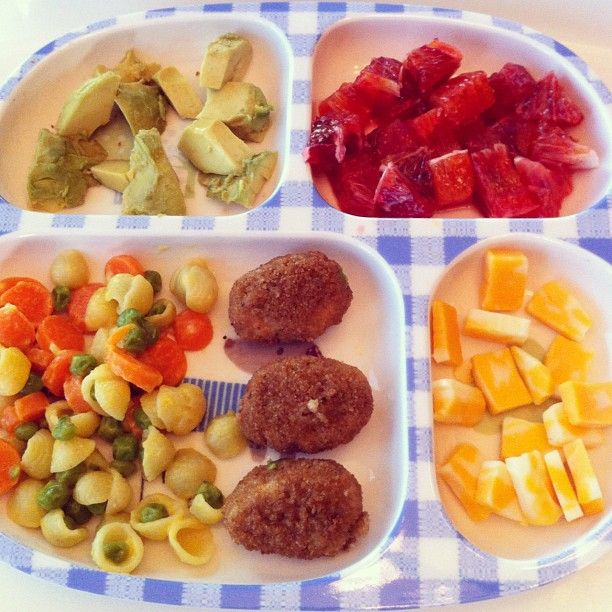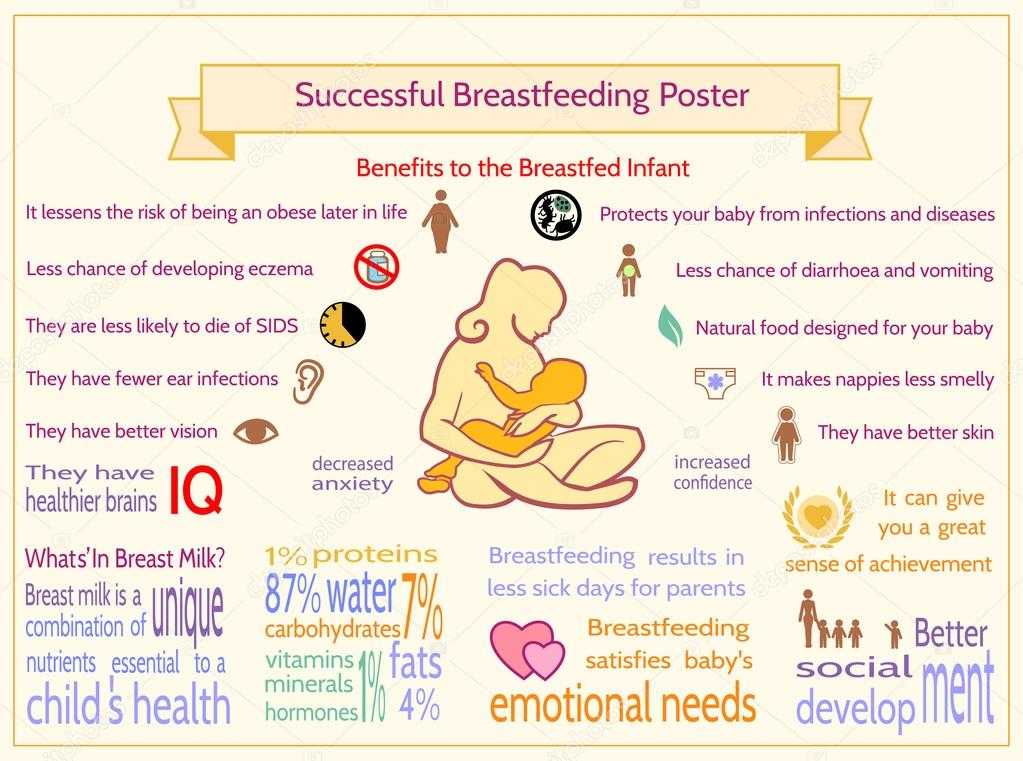Nourishing baby food
Nourished Beginnings Baby Food :: Nutrient-Dense Recipes for Infants, Toddlers and Beyond Inspired by Ancient Wisdom and Traditional Foods
Years and years on my heart to write, and over a year in the making, Nourished Beginnings is now available or purchase!Growing broad taste palates for nutrient dense real food really is possible!
My three girls are living proof that serving simple, real food during those mold-able months and early years will reward you with toddlers and big kids that don’t bat an eye to a plate full of mineral rich vegetables, and brain boosting, nutrient dense food.
Nourished Beginnings is my simple, no fuss approach to feeding babies a wide variety of vegetables, fruits, meats, fish, and fats – without spending all day in the kitchen. I will walk you through safe foods to start for baby’s developing digestive system, while nourishing their growing brains and bodies. Simple tastes of nutrient dense food as they explore the family flavors in the beginning will develop into full toddler meals that nourish rapidly growing bodies.
More than just a baby food book, this traditional foods focused cookbook will grow with your baby.
These recipes are truly the heart of my home. They have been the center of my kitchen for the last 8 years…when I had my first baby. The Nourishing Pea Soup grows from babyhood to the school lunch thermoses. Baby’s First Smoothie grows into Tropical Green Smoothies they will thrive on as a teen. Nourishing baby with beef, chicken, and fish purees with nutrient dense add-ins will train their palates to enjoy a grassfed roast for Sunday dinner and fresh salmon fillets on a weeknight. Let me show you how to introduce brain boosting egg yolks, cod liver oil, and fish without fuss so that they will love and even crave them as big kids.
My biggest goal is to show you how to make a nourishing meal for the whole family to enjoy – from the babies to the teens.
What others are saying!
“Nourished Beginnings Baby Food should be in every new parent’s kitchen! Renee brings food back to the basics in a way that will not only provide your child with the nutrients they need to thrive, but also help train them to love whole foods in a way nature intended.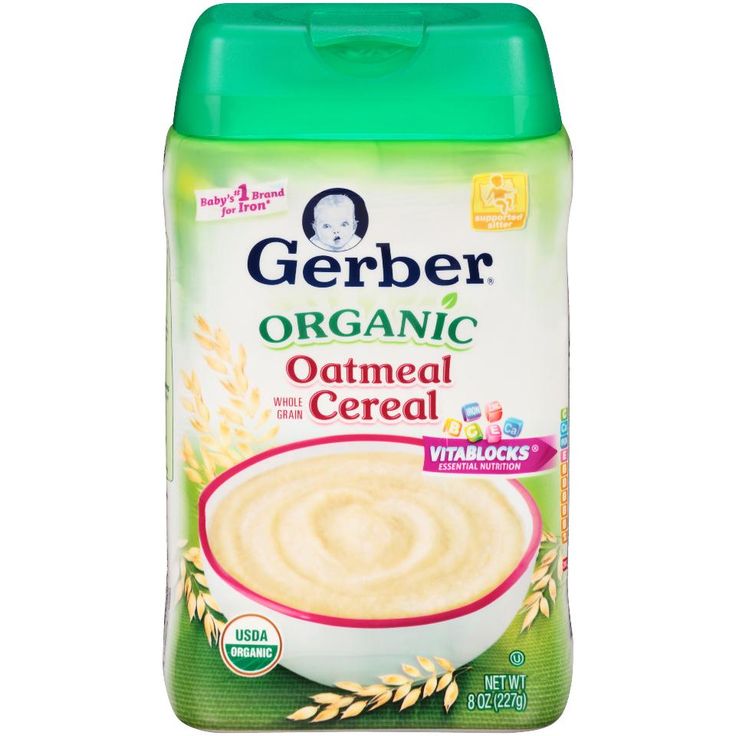 ”
”
―Amy Roskelley, co-owner of Super Healthy Kids
“Nourished Beginnings Baby Food delivers approachable, inspired recipes enveloped in practical, grounded guidance that’s otherwise missing in the dialogue on first foods. Renee Kohley shows you not only how to optimally nourish your children as they begin solid foods, but many of her recipes will likely become favorites for the whole family.”
―Jennifer McGruther, author of The Nourished Kitchen
“When it comes to elegantly simple recipes proven to be both nourishing and delicious, Renee positively shines. The simple ingredients and flavors are sure to be a hit in my home as well as others. Five stars!”
―Jill Winger, creator of The Prairie Homestead
“Renee’s book is just what our world needs. Almost all of the common diseases afflicting our children (and adults) today have a root in poor nutrition. Starting our children off right, from the very start, is going to be key to their long-term health, and Renee shows us how to prepare nutrient-dense foods that even the pickiest eaters will like.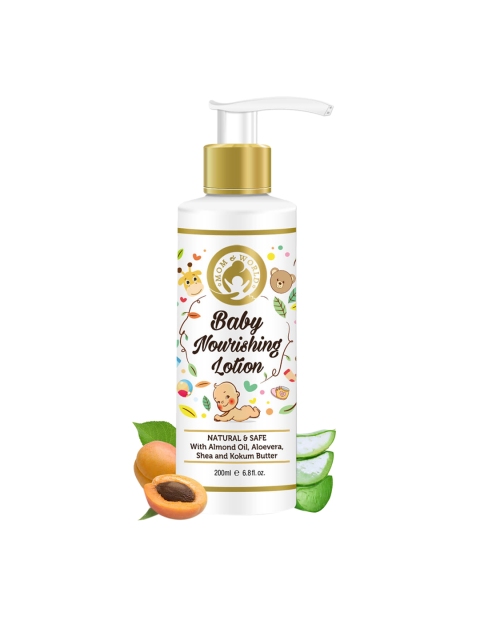 This book is not just for new parents. It’s for ALL parents.”
This book is not just for new parents. It’s for ALL parents.”
―Jessica Espinoza, creator of DeliciousObsessions.com and 20Dishes.com
“In Nourished Beginnings Baby Food, Renee offers an invaluable resource of approachable family recipes to help your family confidently lay a nourishing foundation for a balanced and practical real-food lifestyle.”
―Kristin Marr, creator of Live Simply
“Renee’s Nourished Beginnings is an absolute must-have in any parent’s library. She teaches you how to get your children hooked on real, nutrient-dense, traditional foods no matter their age, with a special focus on making every bite count for babies and toddlers. This is especially helpful for new moms or otherwise busy parents who want to feed their children the best food possible made from whole ingredients.”
―Amanda Torres, MS, creator of The Curious Coconut
Nourished Beginnings is available at ::
Nourishing a Growing Baby - The Weston A.
 Price Foundation
Price FoundationRead this in: ČeštinaDeutschEspañol
🖨️ Print post
A Growing Wise Kids Column
Food is what nourishes the body and makes us healthy and strong–especially when one’s weight hovers around 20 pounds! Infant nutrition is critical for ensuring proper development, maximizing learning capacities and preventing illness. At no other time in life is nutrition so important. But which foods are best? The research clearly points in the direction of Weston A. Price Foundation principles.
Breast or Bottle
Numerous studies support the benefits of breastfeeding. For example, breastfed babies tend to be more robust, intelligent and free of allergies and other complaints like intestinal difficulties.1 Other studies have shown that breastfed infants have reduced rates of respiratory illnesses and ear infections.2,3 Some researchers believe breastfed infants have greater academic potential than formula-fed infants, which is thought to be due to the fatty acid DHA found in mother’s milk and not in most US formulas. 4
4
However, other studies show the opposite. In 2001, a study found breastfed children had more asthma than bottle-fed.5 A Swedish study found that breastfed infants were just as likely to develop childhood ear infections6 and childhood cancer as formula-fed babies.7
So, what is best for baby? It comes down to nutrition! Hands down, healthy breast milk is perfectly designed for baby’s physical and mental development, but this is only true when mom supplies her body with the right nutrients.
The typical modern diet is filled with products based on sugar, white flour, additives and commercial fats and oils, which do not nourish and build. The proper nutrients are necessary to create breast milk that will provide all a growing baby needs. These include good quality proteins from foods such as grass-fed meats and organ meats, good quality fats from butter, coconut oil, olive oil, cod liver oil and egg yolks, as well as complex carbohydrate-rich foods like vegetables, whole grains and legumes–think whole food, natural and seasonal, with a big emphasis on healthy fat.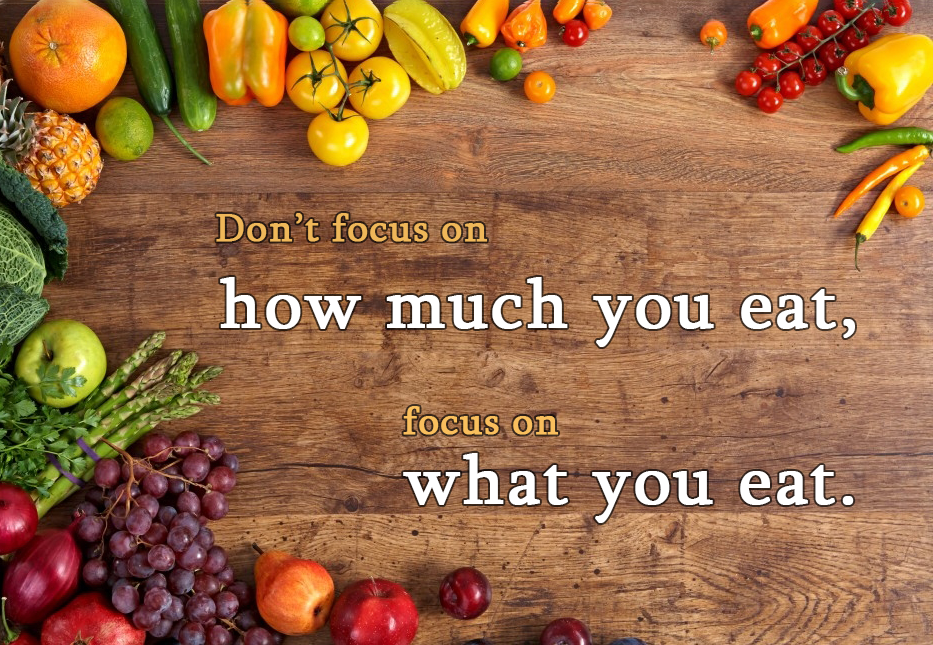
Bottom line, in a perfect world, with perfect nutrition, every woman would breastfeed. Unfortunately, we don’t live in a perfect world. What about low milk supply, an unwell mother or adoption? Luckily, it is possible to make a wholesome whole food baby formula. (See FAQs on Homemade Baby Formula.)
After (or With) the Breast or Bottle
Ideally, breastfeeding should be maintained for a year, with a goal of six months for working mothers. The first year of life requires a full spectrum of nutrients, including fats, protein, cholesterol, carbohydrates, vitamins and minerals. Once breast milk is no longer the sole source of these nutrients, where should one go?
There are three concepts to keep in mind. First, make your little one a “whole foods baby”! Avoid processed and refined foods as much as possible, including many brands of baby food; they are usually devoid of nutrients and have added “undesirables.” It is always best to make your own baby food from organic, whole foods.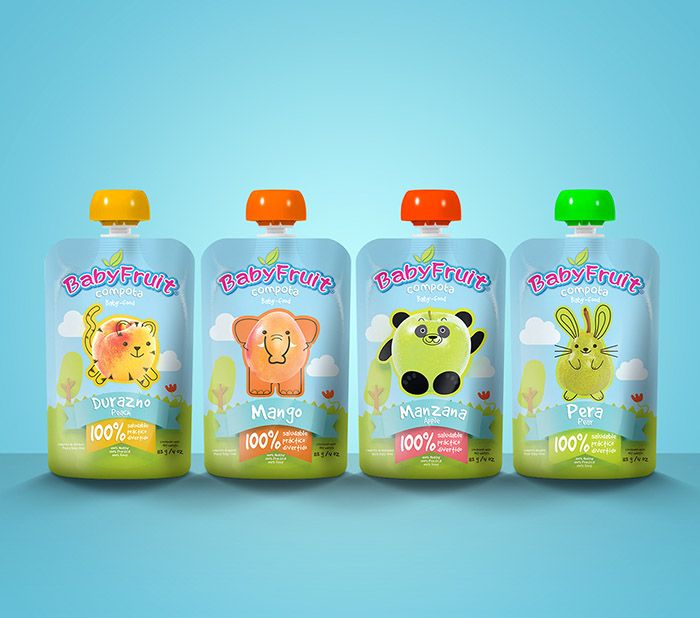 (You can freeze it in one-serving sizes for later use.) Better-quality, additive-free, prepared brands of baby food, like Earth’s Best, do exist, but it is still better to make your own baby food to be assured of the quality–plus making baby food puts mom on the right track for home food preparation for the years to come.
(You can freeze it in one-serving sizes for later use.) Better-quality, additive-free, prepared brands of baby food, like Earth’s Best, do exist, but it is still better to make your own baby food to be assured of the quality–plus making baby food puts mom on the right track for home food preparation for the years to come.
Second, go slowly and be observant; every baby will have an individual response to different foods. Introduce new foods one at a time and continue to feed that same food for at least four days to rule out the possibility of a negative reaction. Signs of intolerance include redness around the mouth; abdominal bloating, gas and distention; irritability, fussiness, over-activity and awaking throughout the night; constipation and diarrhea; frequent regurgitation of foods; nasal and/or chest congestion; and red, chapped or inflamed eczema-like skin rash.8
Finally, respect the tiny, still-developing digestive system of your infant. Babies have limited enzyme production, which is necessary for the digestion of foods. In fact, it takes up to 28 months, just around the time when molar teeth are fully developed, for the big-gun carbohydrate enzymes (namely amylase) to fully kick into gear. Foods like cereals, grains and breads are very challenging for little ones to digest. Thus, these foods should be some of the last to be introduced. (One carbohydrate enzyme a baby’s small intestine does produce is lactase, for the digestion of lactose in milk.1)
In fact, it takes up to 28 months, just around the time when molar teeth are fully developed, for the big-gun carbohydrate enzymes (namely amylase) to fully kick into gear. Foods like cereals, grains and breads are very challenging for little ones to digest. Thus, these foods should be some of the last to be introduced. (One carbohydrate enzyme a baby’s small intestine does produce is lactase, for the digestion of lactose in milk.1)
Foods introduced too early can cause digestive troubles and increase the likelihood of allergies (particularly to those foods introduced). The baby’s immature digestive system allows large particles of food to be absorbed. If these particles reach the bloodstream, the immune system mounts a response that leads to an allergic reaction. Six months is the typical age when solids should be introduced,9,10,11 however, there are a few exceptions.
Babies do produce functional enzymes (pepsin and proteolytic enzymes) and digestive juices (hydrochloric acid in the stomach) that work on proteins and fats. 12 This makes perfect sense since the milk from a healthy mother has 50-60 percent of its energy as fat, which is critical for growth, energy and development.13 In addition, the cholesterol in human milk supplies an infant with close to six times the amount most adults consume from food.13 In some cultures, a new mother is encouraged to eat six to ten eggs a day and almost ten ounces of chicken and pork for at least a month after birth. This fat-rich diet ensures her breast milk will contain adequate healthy fats.14
12 This makes perfect sense since the milk from a healthy mother has 50-60 percent of its energy as fat, which is critical for growth, energy and development.13 In addition, the cholesterol in human milk supplies an infant with close to six times the amount most adults consume from food.13 In some cultures, a new mother is encouraged to eat six to ten eggs a day and almost ten ounces of chicken and pork for at least a month after birth. This fat-rich diet ensures her breast milk will contain adequate healthy fats.14
Thus, a baby’s earliest solid foods should be mostly animal foods since his digestive system, although immature, is better equipped to supply enzymes for digestion of fats and proteins rather than carbohydrates.1 This explains why current research is pointing to meat (including nutrient-dense organ meat) as being a nourishing early weaning food.
Is Cereal the Best First Food?
Remember, the amount of breast milk and/or formula decreases when solid foods are introduced.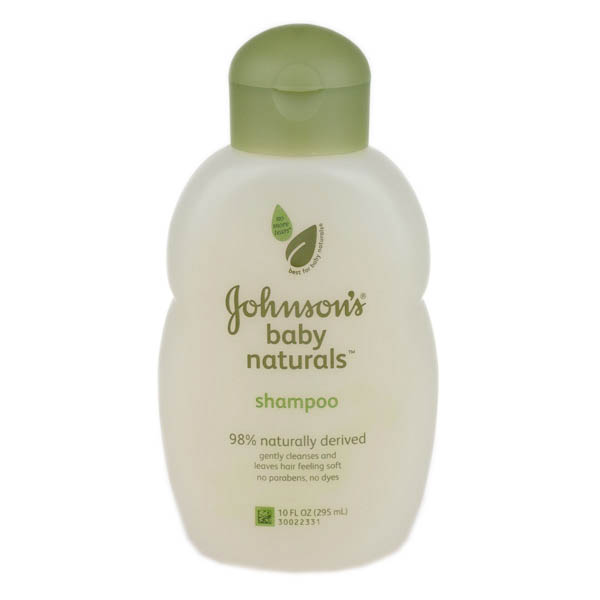 This decrease may open the door for insufficiencies in a number of nutrients critical for baby’s normal growth and development. The nutrients that are often in short supply when weaning begins include protein, zinc, iron and B-vitamins. One food group that has these nutrients in ample amounts is meat.
This decrease may open the door for insufficiencies in a number of nutrients critical for baby’s normal growth and development. The nutrients that are often in short supply when weaning begins include protein, zinc, iron and B-vitamins. One food group that has these nutrients in ample amounts is meat.
Unfortunately, cereal is the most often recommended early weaning food. A recent Swedish study suggests that when infants are given substantial amounts of cereal, they may suffer from low concentrations of zinc and reduced calcium absorption.15
In the US, Dr. Nancy Krebs headed up a large infant growth study that found breastfed infants who received puréed or strained meat as a primary weaning food beginning at four to five months grew at a slightly faster rate. Kreb’s study suggests that inadequate protein or zinc from common first foods may limit the growth of some breastfed infants during the weaning period. More importantly, both protein and zinc levels were consistently higher in the diets of the infants who received meat.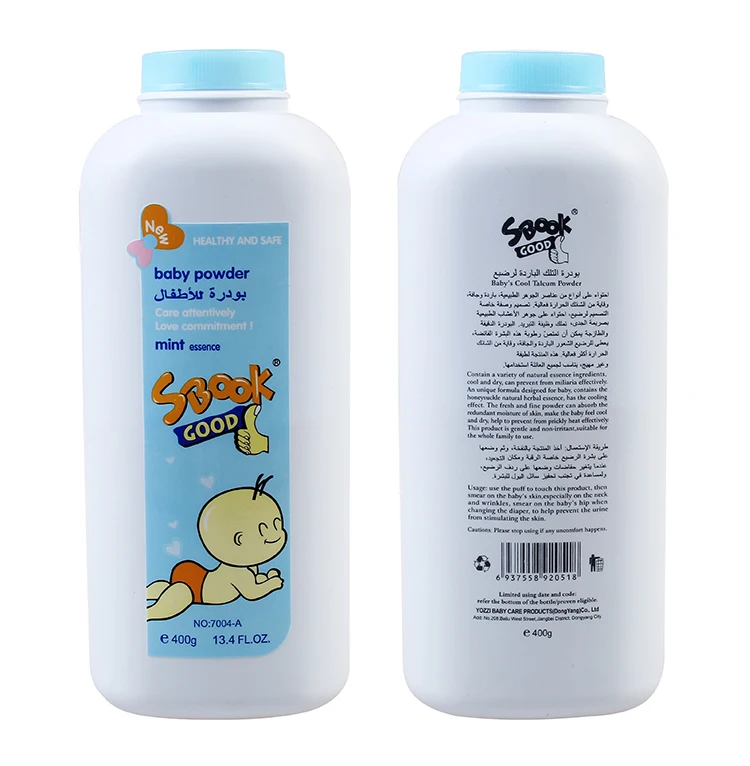 16 Thus, the custom of providing large amounts of cereals and excluding meats before seven months of age may short-change the nutritional requirements of the infant.17
16 Thus, the custom of providing large amounts of cereals and excluding meats before seven months of age may short-change the nutritional requirements of the infant.17
Meat is also an excellent source of iron. Heme iron (the form of iron found in meat) is better absorbed than iron from plant sources (non-heme). Additionally, the protein in meat helps the baby more easily absorb iron from other foods.18 Two recent studies19,20 have examined iron status in breastfed infants who received meat earlier in the weaning period. While researchers found no measurable change in breastfed babies’ iron stores when they received an increased amount of meat, the levels of hemoglobin (iron-containing cells) circulating in the bloodstream did increase. Meat also contains a much greater amount of zinc than cereals, which means more is absorbed.21 These studies confirm the practices of traditional peoples, who gave meat–usually liver–as the first weaning food. Furthermore, the incidence of allergic reactions to meat is minimal and lower still when puréed varieties are used.17,22,23,24
Furthermore, the incidence of allergic reactions to meat is minimal and lower still when puréed varieties are used.17,22,23,24
Don’t Fear Fats!
Pediatric clinicians have known for some time that children fed low-fat and low-cholesterol diets fail to grow properly. After all, a majority of mother’s milk is fat, much of it saturated fat. Children need high levels of fat throughout growth and development. Milk and animal fats give energy and also help children build muscle and bone.1 In addition, the animal fats provide vitamins A and D necessary for protein and mineral assimilation, normal growth and hormone production.27
Choose a variety of foods so your child gets a range of fats, but emphasize stable saturated fats, found in butter, meat and coconut oil, and monounsaturated fats, found in avocados and olive oil.
Foods to Introduce
Egg yolks, rich in choline, cholesterol and other brain-nourishing substances, can be added to your baby’s diet as early as four months,1 as long as baby takes it easily.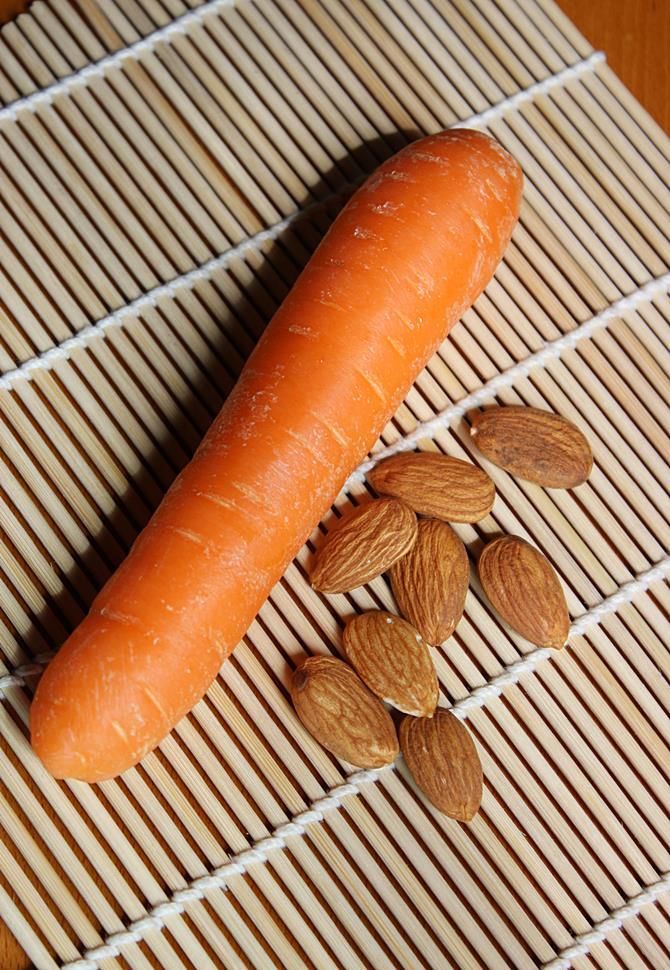 (If baby reacts poorly to egg yolk at that age, discontinue and try again one month later.) Cholesterol is vital for the insulation of the nerves in the brain and the entire central nervous system. It helps with fat digestion by increasing the formation of bile acids and is necessary for the production of many hormones. Since the brain is so dependent on cholesterol, it is especially vital during this time when brain growth is in hyper-speed.25 Choline is another critical nutrient for brain development. The traditional practice of feeding egg yolks early is confirmed by current research. A study published in the June 2002 issue of the American Journal of Clinical Nutrition compared the nutritional effects of feeding weaning infants 6-12 months of age regular egg yolks, enriched egg yolks, and an otherwise normal diet. The researchers found that both breastfed and formula-fed infants who consumed the egg yolks had improved iron levels when compared with the infants who did not.
(If baby reacts poorly to egg yolk at that age, discontinue and try again one month later.) Cholesterol is vital for the insulation of the nerves in the brain and the entire central nervous system. It helps with fat digestion by increasing the formation of bile acids and is necessary for the production of many hormones. Since the brain is so dependent on cholesterol, it is especially vital during this time when brain growth is in hyper-speed.25 Choline is another critical nutrient for brain development. The traditional practice of feeding egg yolks early is confirmed by current research. A study published in the June 2002 issue of the American Journal of Clinical Nutrition compared the nutritional effects of feeding weaning infants 6-12 months of age regular egg yolks, enriched egg yolks, and an otherwise normal diet. The researchers found that both breastfed and formula-fed infants who consumed the egg yolks had improved iron levels when compared with the infants who did not.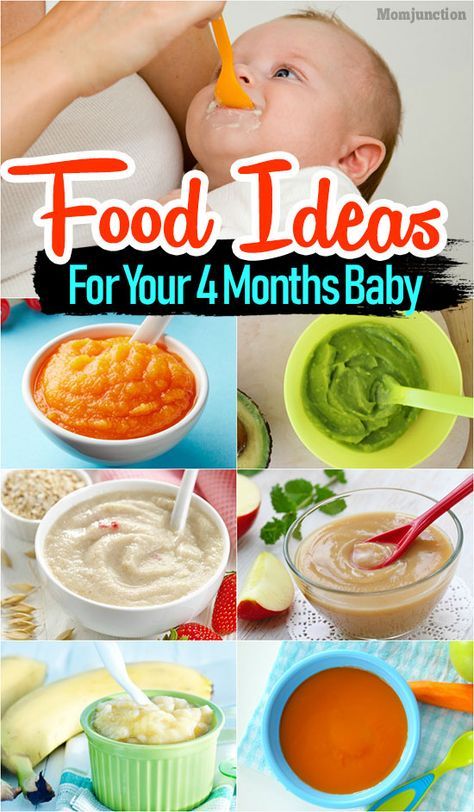 In addition, those infants who got the egg yolks enriched with extra fatty acids had 30 percent to 40 percent greater DHA levels than those fed regular egg yolks. No significant effect on blood cholesterol levels was seen.26
In addition, those infants who got the egg yolks enriched with extra fatty acids had 30 percent to 40 percent greater DHA levels than those fed regular egg yolks. No significant effect on blood cholesterol levels was seen.26
Thus, the best choice for baby is yolks from pasture-fed hens raised on flax meal, fish meal, or insects since they will contain higher levels of DHA. Why just the yolk? The white is the portion that most often causes allergic reactions, so wait to give egg whites until after your child turns one.1,11
Don’t neglect to put a pinch of salt on the egg yolk. While many books warn against giving salt to babies, salt is actually critical for digestion as well as for brain development. Use unrefined salt to supply a variety of trace minerals.
Around four months is a good time to start offering cod liver oil, which is an excellent source of the omega-3 fatty acids DHA and EPA (also important for brain develoment) as well as vitamins A and D. Start with a 1/4 teaspoon of high-vitamin cod liver oil or 1/2 teaspoon regular dose cod liver oil, doubling the amount at 8 months.12 Use an eye dropper at first; later baby can take cod liver oil mixed with a little water or fresh orange juice.
Start with a 1/4 teaspoon of high-vitamin cod liver oil or 1/2 teaspoon regular dose cod liver oil, doubling the amount at 8 months.12 Use an eye dropper at first; later baby can take cod liver oil mixed with a little water or fresh orange juice.
If baby is very mature and seems hungry, he may be given mashed banana during this period. Ripe banana is a great food for babies because it contains amylase enzymes to digest carbohydrates.1
At Six Months
Puréed meats can be given at six months (or even earlier if baby is very mature). Meats will help ensure adequate intake of iron, zinc, and protein with the decrease in breast milk and formula.17
A variety of fruits can be introduced at this time. Avocado, melon, mangoes and papaya can be mashed and given raw. High-pectin fruits such as peaches, apricots, apples, pears, cherries and berries should be cooked to break down the pectin, which can be very irritating to the digestive tract.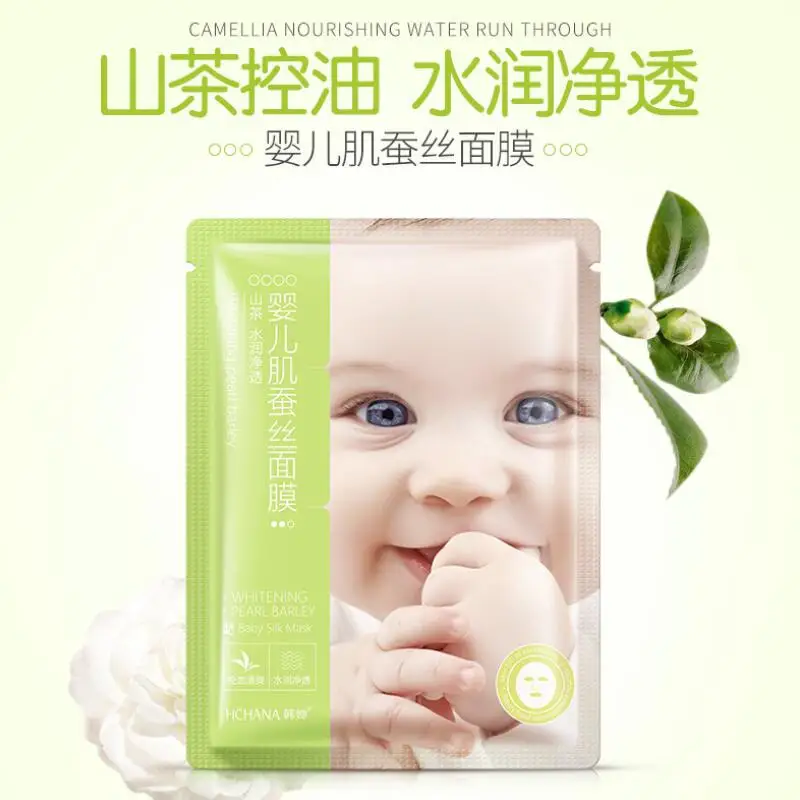
As time goes by, move up in complexity with food and texture. At about six to eight months, vegetables may be introduced, one at a time so that any adverse reactions may be observed. Carrots, sweet potatoes and beets are excellent first choices. All vegetables should be cooked (steamed preferably), mashed and mixed with a liberal amount of fat, such as butter or coconut oil, to provide nutrients to aid in digestion.
Early introduction to different tastes is always a good plan to prevent finickiness. Feed your little one a touch of buttermilk, yogurt or kefir from time to time to familiarize them with the sour taste. Lacto-fermented roots, like sweet potato or taro, are another excellent food for babies to add at this time.1
At Eight Months
Baby can now consume a variety of foods including creamed vegetable soups, homemade stews and dairy foods such as cottage cheese, mild harder raw cheese, cream and custards. Hold off on grains until one year, with the possible exception of soaked and thoroughly cooked brown rice, which can be served earlier to babies who are very mature.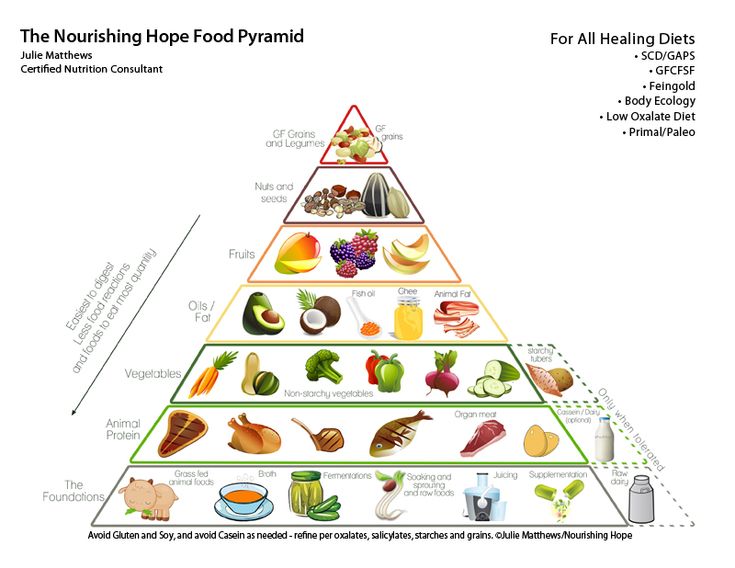
At One Year
Grains, nuts and seeds should be the last food given to babies. This food category has the most potential for causing digestive disturbances or allergies. Babies do not produce the needed enzymes to handle cereals, especially gluten-containing grains like wheat, before the age of one year. Even then, it is a common traditional practice to soak grains in water and a little yogurt or buttermilk for up to 24 hours. This process jump-starts the enzymatic activity in the food and begins breaking down some of the harder-to-digest components.1 The easiest grains to digest are those without gluten like brown rice. When grains are introduced, they should be soaked for at least 24 hours and cooked with plenty of water for a long time. This will make a slightly sour, very thin porridge that can be mixed with other foods.29
After one year, babies can be given nut butters made with crispy nuts (recipe in Nourishing Traditions), cooked leafy green vegetables, raw salad vegetables, citrus fruit and whole egg.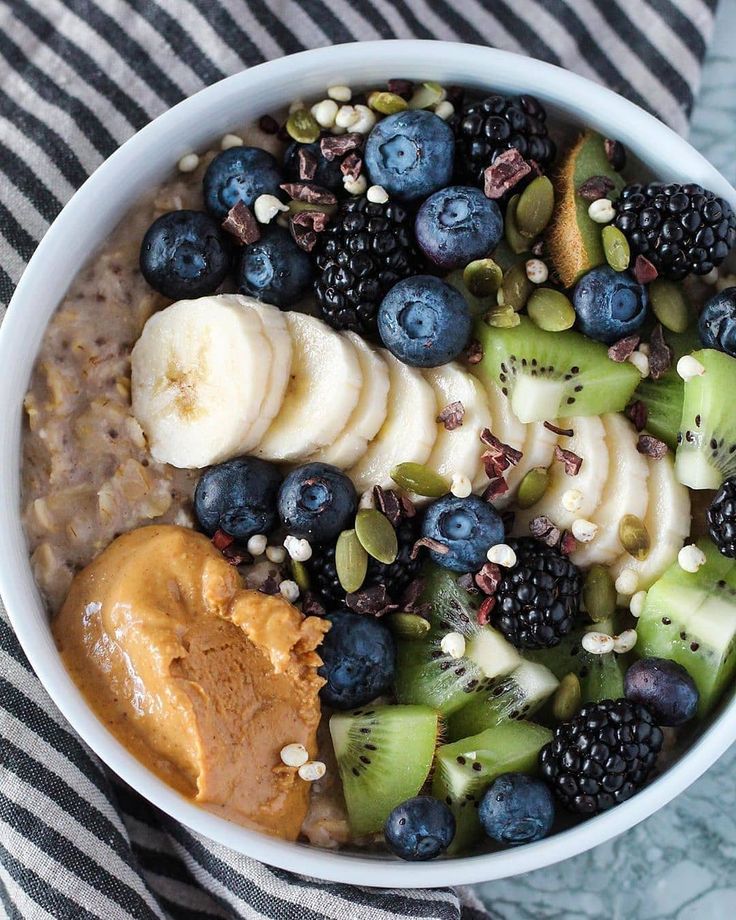
Extra Feeding Baby Tid-Bits
- How do you know when it’s time to add solids? Observe your baby’s signs. When infants are ready for solids they start leaning forward at the sight of food and opening their mouths in a preparatory way. In addition, babies should be able to sit up and coordinate breathing with swallowing. Finally, infants will stop pushing their tongue out when a spoon or bit of food is placed in their mouth–a reflex common in infants that disappears at around four months of age.30
- Keep in mind, all babies are different and will not enjoy or tolerate the same foods or textures. Experiment by offering different foods with various textures. Remember, just because your baby doesn’t like a food the first time it is introduced does not mean he will not like it the second time. Continue to offer the food, but never force.
- Baby’s food should be lightly seasoned with unrefined salt, but there is no need to add additional seasonings, such as herbs and spices in the beginning.
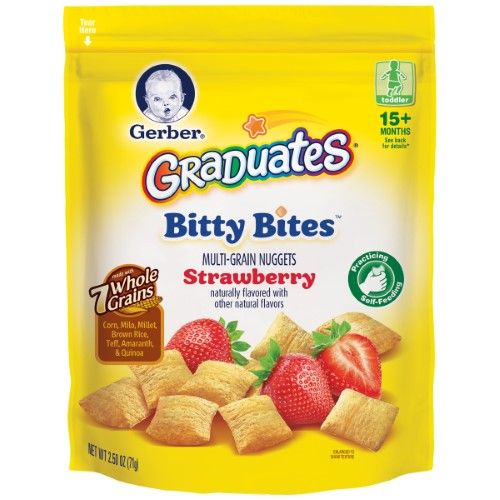 However by 10-12 months, your baby may enjoy a variety of natural seasonings.
However by 10-12 months, your baby may enjoy a variety of natural seasonings. - To increase variety, take a small portion of the same food you are preparing for the rest of the grown-up family (before seasoning), or leftovers, and purée it for baby (thin or thicken accordingly).
- To gradually make food lumpier, purée half of the food, roughly mash the other half and combine the two.
- Frozen finger foods are a great way to soothe a baby’s teething pain
- Keep a selection of plain yogurt, cottage cheese, eggs, fresh fruit, and fresh or frozen vegetables handy to prepare almost instant natural baby food any time–even when vacationing or traveling.
- Organic foods have minimal toxicity, thus placing a smaller chemical burden on the body. This is particularly a benefit for our youngsters. They are more vulnerable to pesticide exposure because their organs and body systems are not fully developed and, in relation to body weight, they eat and drink more than adults.
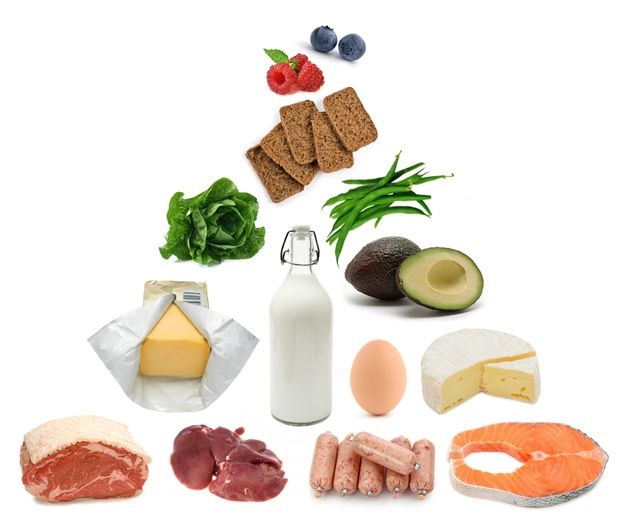 Furthermore, the presence of these chemicals in the environment leads to further contamination of our air, waterways and fields.
Furthermore, the presence of these chemicals in the environment leads to further contamination of our air, waterways and fields. - There are different ideas concerning when to offer babies water. Many resources suggest giving water about the same time solids are introduced. This is often in combination with cup drinking or sippy-cup training. Keep in mind, breast milk and formula are providing the majority of nutrients in the first 6-9 months, so it is important not to allow a baby to get too full on water. When solids become a larger part of the diet, more liquid may be needed for hydration and digestion. Also, extreme heat, dehydration, vomiting, and fever may also indicate a need for extra water. Bottom line: follow your baby’s cues. Always serve filtered water to your baby. You can add a pinch of unrefined salt to the water for minerals.
- Let baby eat with a silver spoon–the small amount of silver he will get from this really does help fight infection!
Just Say No
One important warning: do not give your child juice, which contains too much simple sugar and may ruin a child’s appetite for the more nourishing food choices. Soy foods, margarine and shortening, and commercial dairy products (especially ultra-pasteurized) should also be avoided, as well as any products that are reduced-fat or low-fat.
Soy foods, margarine and shortening, and commercial dairy products (especially ultra-pasteurized) should also be avoided, as well as any products that are reduced-fat or low-fat.
By the way, baby fat is a good thing; babies need those extra folds for all the miraculous development their bodies are experiencing. Chubby babies grow up into slim, muscular adults.
Common sense prevails when looking at foods that best nourish infant’s. A breastfeeding mother naturally produces the needed nutrition when she consumes the necessary nutrients. The composition of healthy breast milk gives us a blueprint for an infants needs from there on out. Finally, be an example. Although you won’t be able to control what goes into your child’s mouth forever, you can set the example by your own excellent food choices and vibrant health.
Egg Yolk (4 months +)
Boil an egg for three to four minutes (longer at higher altitudes), peel away the shell, discard the white and mash up yolk with a little unrefined sea salt. (The yolk should be soft and warm, not runny.) Small amounts of grated, raw organic liver (which has been frozen 14 days) may be added to the egg yolk after 6 months. Some mothers report their babies actually prefer the yolk with the liver. From Nourishing Traditions by Sally Fallon.
Pureed Meats (6 months +)
Cook meat gently in filtered water or homemade stock until completely tender, or use meat from stews, etc., that you have made for your family. Make sure the cooked meat is cold and is in no bigger than 1-2 inch chunks when you puree. Grind up the meat first until it’s almost like a clumpy powder. Then add water, formula or breast milk, or the natural cooking juices as the liquid.
Baby Pate (6 months +)
Place 1/4 pound organic chicken livers and 1/4 cup broth or filtered water in a saucepan, bring to a boil and reduce heat. Simmer for eight minutes. Pour into a blender (liver and liquid) with 1-2 teaspoons butter and a pinch of seasalt and blend to desired consistency.
Vegetable Puree (6 months +)
Use squash, sweet potatoes, parsnips, rutabagas, carrots or beets. Cut vegetables in half, scoop out seeds from squash and bake in a 400 degree oven for about an hour, or steam them (in the case of carrots and beets) for 20 to 25 minutes. Mix in butter when puréeing. You can cook these vegetables for your own dinner and purée a small portion in a blender or food mill for your baby. From Natural Baby Care by Mindy Pennybacker.
Fruit Sauce (6 months +)
Use fresh or frozen peaches, nectarines, apples, blueberries, cherries, pears, berries or a combination. Note: Whenever possible, use organic fruit, and peel the fruit if it is not organic. Cut fruit and put in a saucepan with 1 cup filtered water for every 1/2 cup of fruit. Bring to a boil; reduce to a simmer about 15 minutes or until the fruit is cooked. Purée the mixture in a blender or food mill and strain if necessary. Don’t add sugar or spices but you can stir in a little butter or cream.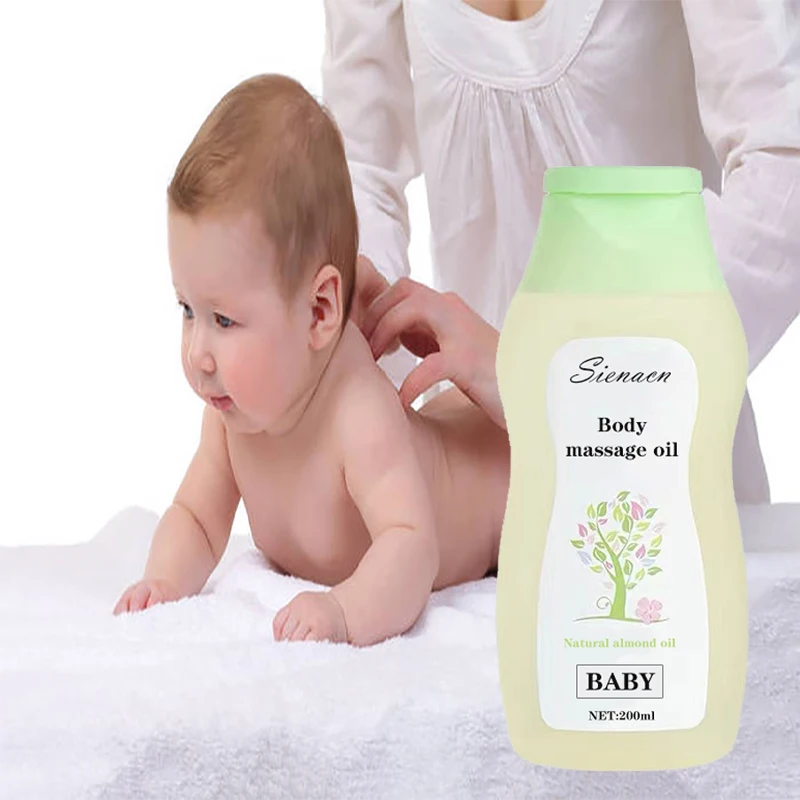 From Natural Baby Care by Mindy Pennybacker.
From Natural Baby Care by Mindy Pennybacker.
Dried Apricot Puree (6 months +)
Bring 2 cups filtered water to a boil with 1 pound unsulphured dried apricots and simmer for 15 minutes. Reserve any leftover liquid to use for the puree. Puree, adding the reserved liquid as necessary to achieve a smooth, thin puree. May be blended with some butter.
Fermented Sweet Potato (6 months +)
Poke a few holes in 2 pounds sweet potatoes and bake in an oven at 300 degrees for about 2 hours or until soft. Peel and mash with 1 teaspoon seasalt and 4 tablespoons whey. Place in a bowl, cover, and leave at room temperature for 24 hours. Place in an airtight container and store in the refrigerator. From Nourishing Traditions by Sally Fallon.
Baby Custard (6 months +)
Mix 1 cup raw milk or whole coconut milk, 1 cup raw cream, 6 egg yolks, 1/2 teaspoon vanilla and a pinch of stevia powder. Pour into buttered ramekin dishes. Place ramekins into a Pyrex dish filled part-way with water.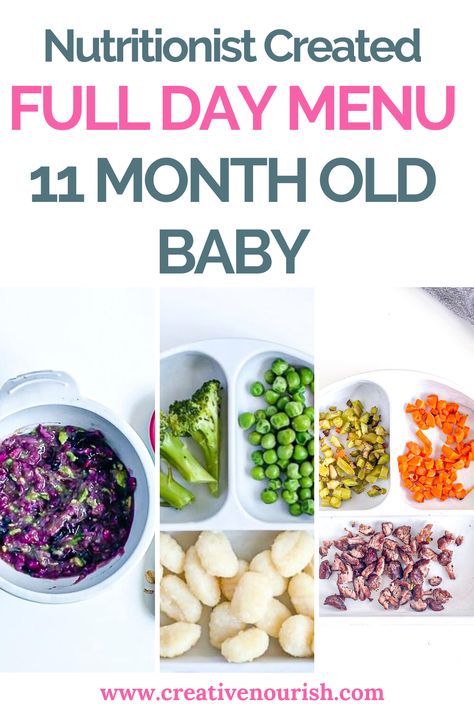 Preheat oven to 310 degrees and cook for about 1 hour.
Preheat oven to 310 degrees and cook for about 1 hour.
Smoothie for Baby(8 months +)
Blend 1 cup whole yoghurt with 1/2 banana or 1/2 cup puréed fruit, 1 raw egg yolk (from an organic or pastured chicken) and a pinch of stevia.
Coconut Fish Pate (8 months +)
Place 1 cup leftover cooked fish, 1/4 teaspoon seasalt, 1/4 teaspoon fresh lime juice in a food processor and process with a few pulses. Add 1/2-1 cup coconut cream or whole coconut milk to obtain desired consistency.
Cereal Gruel for Baby (1 year +)
Mix 1/2 cup freshly ground organic flour of spelt, Kamut® , rye, barley or oats with 2 cups warm filtered water mixture plus 2 tablespoons yoghurt, kefir or buttermilk. Cover and leave at room temperature for 12 to 24 hours. Bring to a boil, stirring frequently. Add 1/4 teaspoon salt, reduce heat and simmer, stirring occasionally, about 10 minutes. Let cool slightly and serve with cream or butter and small amount of a natural sweetener, such as raw honey.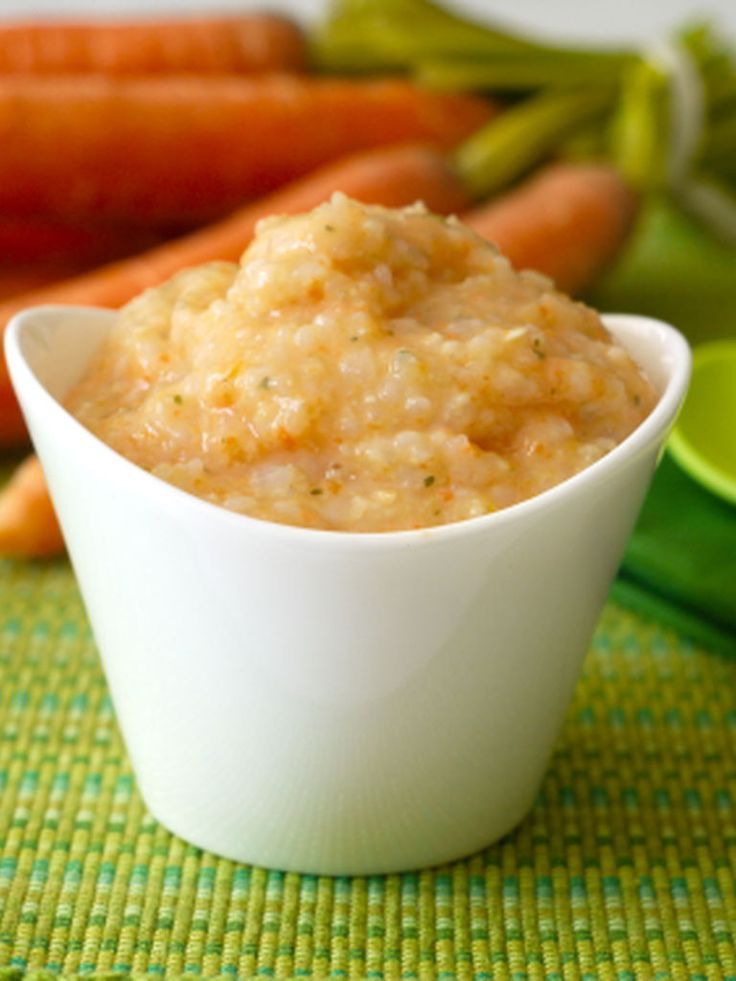 From Nourishing Traditions by Sally Fallon.
From Nourishing Traditions by Sally Fallon.
Salmon and Rice Mousse (1 year +)
Heat 2 cups chicken broth to a slow boil and add 1/4 cup soaked brown rice. Lower the heat, cover tightly, and let cook for 30 minutes or until it is almost done. Wash 3 ounces salmon thoroughly and remove all bones carefully. Add the salmon to the rice, cover, and let it poach for 10 minutes or until done all the way through. Allow the salmon and rice to cool enough that it can be puréed safely in the blender or food processor. If it is too thick, add just enough water to obtain the consistency you want. Season with a little seasalt.Serve with a puréed vegetable. From The Crazy Makers by Carol Simontacchi.
Crispy Nut Butter (1 year +)
Purée equal amounts of crispy nuts, raw honey and coconut oil. Add salt to taste. Serve at room temperature. From Nourishing Traditions by Sally Fallon.
Sidebars
Foods By Age
4-6 Months
Minimal solid foods as tolerated by baby
Egg yolk–if tolerated, preferably from pastured chickens, lightly boiled and salted
Banana–mashed, for babies who are very mature and seem hungry
Cod liver oil— 1/4 teaspoon high vitamin or 1/2 teaspoon regular, given with an eye dropper
6-8 months
Organic liver–grated frozen and added to egg yolk
Pureed meats–lamb, turkey, beef, chicken, liver and fish
Butter and Cream: Added to any pureed foods
Soup broth–(chicken, beef, lamb, fish) added to pureed meats and vegetables, or offered as a drink
Fermented foods–small amounts of yoghurt, kefir, sweet potato, taro, if desired
Raw mashed fruits–banana, melon, mangoes, papaya, avocado
Cooked, pureed fruits–organic apricot, peaches, pears, apples, cherries, berries
Cooked vegetables–zucchini, squash, sweet potato, carrots, beets, with butter or coconut oil
8-12 months
Continue to add variety and increase thickness and lumpiness of the foods already given from 4-8 months
Creamed vegetable soups
Homemade stews–all ingredinets cut small or mashed
Dairy–cottage cheese, mild harder raw cheese, cream, custards
Finger foods–when baby can grab and adequately chew, such as lightly steamed veggie sticks, mild cheese, avocado chunks, pieces of banana
Cod liver oil–increase to 1/2 teaspoon high vitamin or 1 teaspooon regular dose
Over 1 Year
Grains and legumes–properly soaked and cooked
Crispy nut butters–see recipes in Nourishing Traditions
Leafy green vegetables–cooked, with butter
Raw salad vegetables–cucumbers, tomatoes, etc.
Citrus fruit–fresh, organic
Whole egg–cooked
Foods to avoid
28Up to 6 months: Certain foods, such as spinach, celery, lettuce, radishes, beets, turnips and collard greens, may contain excessive nitrate, which can be converted into nitrite (an undesirable substance) in the stomach. Leafy green vegetables are best avoided until 1 year. When cooking vegetables that may contain these substances, do not use the water they were cooked in to purée.
Up to 9 months: Citrus and tomato, which are common allergens.
Up to 1 year: Because infants do not produce strong enough stomach acid to deactivate potential botulism spores, infants should refrain from eating honey.1 Use blackstrap molasses, which is high in iron and calcium. Egg whites should also be avoided up to one year due to their high allergenic potential.
ALWAYS: Commercial dairy products (especially ultra-pasteurized), modern soy foods, margarines and shortening, fruit juices, reduced-fat or low-fat foods, extruded grains and all processed foods.
Making Homemade Baby Food
Making homemade baby food may not be as easy as opening a can, but once you have organized a cook-and-freeze routine, it is a snap. This gives you the control over food choices and cooking methods, and allows you to avoid synthetic preservatives. With careful preparation, you will maximize the nutrient and enzyme content of your baby’s food. This will make for easier digestion and better overall nutrition. One timesaving method is to cook and purée a selection of fruits, vegetables, and meats in adult quantities, and freeze them in glass custard dishes or porcelain ramekins, or just clumps on a baking sheet. These cubes can be placed in freezer bags, labeled and sealed, available for quick thawing and reheating. Thawing in the refrigerator is the most nutrient-saving method. Simply place a covered dish containing food cubes in the fridge; they will thaw in three to four hours. It only takes one to two hours at room temperature. When on the go, put the cubes in a glass container and add hot water or place the container in hot water to thaw.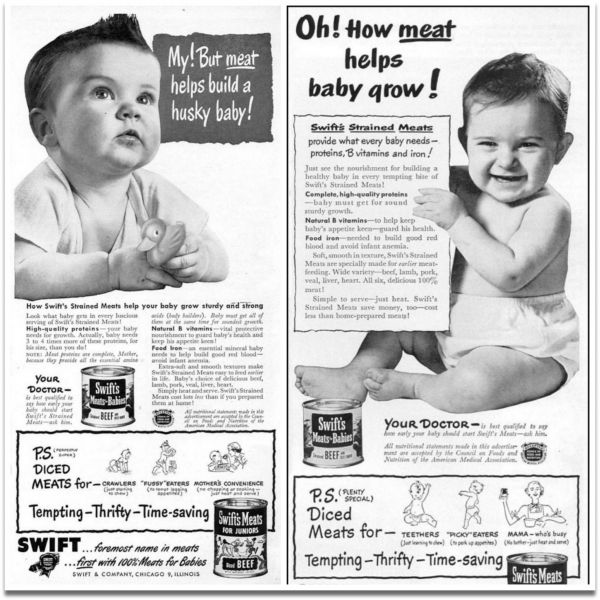
Little attention is necessary to seasoning baby foods, but texture is important. Besides the basic taste, the smoothness or thickness of a food concerns baby most. To thin purées, use milk or formula. Puréed potatoes, winter squash, bananas, carrots, yogurt, nut or seed paste, and peas make great thickeners.
The only special equipment you need is a food processor, blender or a baby food mill and a simple metal collapsible steamer basket. Don’t forget the unbreakable bowls, baby spoons, and bibs. Two-handed weighted cups for drinking lessons are also a must.
How much at each meal?
With the rough outline below, one food portion is equal to approximately one tablespoon, depending on the type of ice cube or other food trays you may be using for freezing baby food. Start out slowly. Prepare a teaspoon-sized portion of whatever food you have chosen to begin with. Your baby will most likely only eat half of that small portion for the first few attempts with solids. Ultimately, baby will tell you how much he should eat.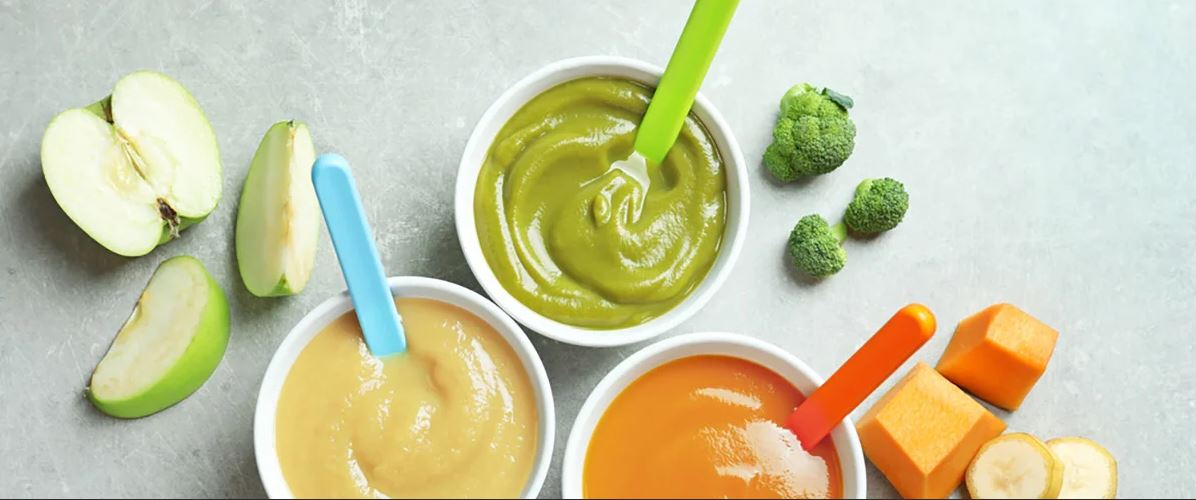 Your main concern should be making what he does eat as nutritious as possible. As your baby becomes accustomed to eating solids, you can gradually increase the portion size. Once you have ruled out sensitivities/allergies to different foods, be sure to rotate the acceptable foods in the diet–meaning, try to avoid having the same food day in and day out. The following are guidelines for 6-8 months:
Your main concern should be making what he does eat as nutritious as possible. As your baby becomes accustomed to eating solids, you can gradually increase the portion size. Once you have ruled out sensitivities/allergies to different foods, be sure to rotate the acceptable foods in the diet–meaning, try to avoid having the same food day in and day out. The following are guidelines for 6-8 months:
- Breakfast: Breast milk or formula, 1 egg yolk, 1 cube meat, 1-2 tablespoons cottage cheese or smoothie
- Lunch: Breast milk or formula, mashed banana or 1 cube fruit or vegetable
- Snack/Dinner: Breast milk or formula and 1 cube of meat, 1-2 tablespoons fermented taro or sweet potato
Portions increase for 8-10 months:
- Breakfast: Breast milk or formula, 1 egg yolk, 1-2 cubes fruit or vegetable, and 1 cube meat
- Lunch: Breast milk or formula, 1-2 cubes meat, 1-3 cubes vegetable, optional dairy such as yogurt or cheese
- Dinner: Breast milk or formula, 2 cubes meat, 1-3 cubes fruit and vegetables, yogurt or cheese
- Snacks: Finger foods or smoothie
Remember, not all babies will be eating the same amounts or foods. This portion outline is just an example. Some infants are not ready to eat 3 “meals” per day until well into the 9-10 month range. You should use the above information as a guide only and keep to your infant’s development and eating habits as well as your pediatrician’s advice.30
This portion outline is just an example. Some infants are not ready to eat 3 “meals” per day until well into the 9-10 month range. You should use the above information as a guide only and keep to your infant’s development and eating habits as well as your pediatrician’s advice.30
Not a Good Idea for Babies! (Or Their Parents or Brothers and Sisters Either!)
Almond Breeze Vanilla (Almond Milk): Purified water, evaporated cane juice, almonds, tricalcium phosphate, natural vanilla flavor and other natural flavors, sea salt, potassium citrate, carrageenan, soy lecithin, d-alpha tocopherol (natural vitamin E), vitamin A palmitate, vitamin D2
Rice Dream “Heartwise” Rice Drink Original: Filtered water, brown rice (partially milled) gum arabic, expeller pressed high oleic safflower oil, tricalcium phosphate, CorowiseTM phytosterol esters, sea salt, vitamin A palmitate, vitamin D2, vitamin B12
365 Organic Rice Milk Vanilla: Filtered water, partially milled organic rice, organic expeller pressed canola oil, tricalcium phosphate, natural vanilla flavor with other natural flavors, sea salt, carrageenan, vitamin A palmitate, vitamin D.
REFERENCES
- Fallon, Sally. Nourishing Traditions. NewTrends Publishing. 1999
- Wilson AC, Forsyth JS, Creene SA, et al. Relation of infant diet to childhood health: seven year follow up of cohort children in Dundee infant feeding study. British Medical Journal, 1998; 316:21-5.
- Scariati PD. A longitudinal analysis of infant mortality and the extent of breast-feeding in the US. Pediatrics. 1997;99:5-12.
- Pediatrics 1998;101(1):37985
- Y Takemura and others. Relaton between Breastfeeding and the Prevalence of Asthma: The Tokorozawa Childhood Asthma and Pollinosis Study. American Journal of Epidemiology. July 2001;154(2):11509
- K W Wefring and others. Nasal congestion and earache – upper respiratory tract infections in 4-year-old children. Tidsskr Nor Laegeforen. April 30, 2001;121(11):1329-32
- I Hardell and A C Dreifaldt. Breastfeeding duration and the risk of malignant diseases in childhood in Sweden.
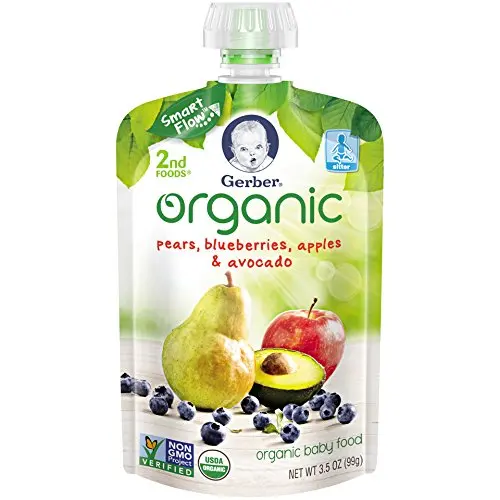 European Journal of Clinical Nutrition. March 2001;55(3):179-85
European Journal of Clinical Nutrition. March 2001;55(3):179-85 - Percival, Mark. D.C. N.D. Infant Nutrition. Health Coach System. 1995.
- Krohn, Jacqueline, M.D. Allergy Relief and Prevention. Hartly and Marks. 2000.
- Mendelsohn, Robert, M.D. How to Raise a Healthy Child in Spite of Your Doctor. Ballantine Books. 1984.
- Smith, Lendon, M.D. How to Raise a Healthy Child. M. Evans and Company. 1996.
- Thurston, Emory. Ph.D. ScD. Parents’ Guide to Nutrition for Tots to Teens. Keats Publishing. 1979.
- Jensen RG. Lipids in Human Milk. Lipids 1999;34:1243-1271
- Chen ZY, Kwan KY, Tong KK, Ratnayake WMN, Li HQ, Leung SSF. Breast Milk Fatty Acid Composition: A Comparative Study Between Hong Kong and Chongqing Chinese. Lipids 1997;32:1061-1067
- Persson, A. et al. Are weaning foods causing impaired iron and zinc status in 1-year-old Swedish infants? A cohort study. Acta Paediatr 1998; 87(6): 618-22
- Krebs, N.
 Research in Progress. Beef as a first weaning food. Food and Nutrition News 1998; 70(2):5
Research in Progress. Beef as a first weaning food. Food and Nutrition News 1998; 70(2):5 - Krebs, Nancy. Dietary Zinc and Iron Sources, Physical Growth and Cognitive Development of Breastfed Infants. Journal of Nutrition. 2000;130:358S-360S.
- Engelmann M. D., Davidsson L., Sanstrom B., Walczyk T., Hurrell R. F., Michaelsen K. F. The influence of meat on nonheme iron absorption in infants. Pediatr. Res. 1998a;43:768-7
- Makrides, M. et al. A randomized controlled clinical trial of increased dietary iron in breast-fed infants. J Pediatr 1998; 133(4): 559-62.
- Engelmann, M. et al. Meat intake and iron status in late infancy: an intervention study, J Pediatr Gastroenterol Nutr 1998; 26(1): 26-33
- Jalla S., Steirn M. E., Miller L. V., Krebs N. F. Comparison of zinc absorption from beef vs iron fortified rice cereal in breastfed infants. FASEB J 1998;12:A346(abs.)
- Engelmann M. D., Sandstrom B.
 , Michaelsen K. F. Meat intake and iron status in late infancy: an intervention study. J. Pediatr. Gastroenterol. Nutr. 1998b;26:26-33
, Michaelsen K. F. Meat intake and iron status in late infancy: an intervention study. J. Pediatr. Gastroenterol. Nutr. 1998b;26:26-33 - Westcott J. L., Simon N. B., Krebs N. F. Growth, zinc and iron status, and development of exclusively breastfed infants fed meat vs cereal as a first weaning food. FASEB J 1998;12:A847(abs.)
- Birch L. L., Grimm-Thomas K. Food acceptance patterns: children learn what they like. Pediatr. Basics 1996;75:2-6
- Sears, William, M.D. Sears, Martha, R.N. The Baby Book. Little, Brown, and Company. 1993.
- Nutritional effect of including egg yolk in the weaning diet of breast-fed and formula-fed infants: a randomized controlled trial. American Journal of Clinical Nutrition, Vol. 75, No. 6, 1084-1092, June 2002
- Enig, Mary. Ph.D. Dietary Recommendations for Children – A Recipe for Future Heart Disease? Accessed August 17, 2004.
- Pennybacker, Mindy and Ikramuddin, Aisha. Natural Baby Care.
 Mothers and Others for a Livable Planet. John Wiley and Sons, Inc. 1999.
Mothers and Others for a Livable Planet. John Wiley and Sons, Inc. 1999. - Cowan, Tom M.D. Feeding Our Children. Found at www.fourfoldhealing.com on January 12, 2005.
- Information found at www.wholesomebabyfood.com on December 29, 2004.
This article appeared in Wise Traditions in Food, Farming and the Healing Arts, the quarterly magazine of the Weston A. Price Foundation, Summer 2005.
🖨️ Print post
Read this in: ČeštinaDeutschEspañol
how to choose and what kind of baby food is better?
The ideal "baby food" for an infant is breast milk. However, not all mothers can breastfeed their baby, usually this is due to the health of the mother or child. It happens that the woman herself has a serious condition after childbirth and in the early postoperative period, reduced lactation or diseases in which breastfeeding is contraindicated. In such cases, the baby is given formula milk - this is the only alternative to mother's milk. Subsequently, at four to seven months, complementary foods should be introduced into the child's diet, regardless of whether he is breastfed or artificial. The mother is faced with the task of choosing the right baby food for complementary foods.
In this article, we will talk about what foods for babies are and how to choose the best baby food.
Legislation under "baby food" means food products that meet the physiological needs of the body of a child under 14 years of age. And nutrition for young children is food intended for children from birth to three years[1]. It is necessary to make a diet taking into account the age of the baby and the characteristics of his physical condition.
The Union of Pediatricians of Russia created the National Program for feeding children in the first year of life and the National Program for optimizing the nutrition of children from one to three years old [2]. They describe recommendations regarding what formula to feed the baby from birth, how to introduce complementary foods and expand the baby's diet. These programs provide detailed information on what nutrients and nutrients should be included in the diet of children of different ages.
First you need to figure out what kind of baby food is[3]. Products for toddlers can be divided into two categories:
Infant formula. There are for children from birth to six months (formula 1 mixtures, or initial), from six months to a year (formula 2) and from a year (formula 3). The composition of such baby food is adapted, that is, as close as possible to the composition of breast milk.
- In the initial mixtures, the amount of protein is reduced to 1.2-1.5 g / 100 ml - in accordance with the composition of breast milk. They also changed the fat and mineral profile. The initial mixtures are enriched with such an essential amino acid as taurine, and micronutrients, probiotics, vitamins.
- After six months, the baby's need for protein increases, mother's milk changes its composition. And babies on artificial feeding begin to be fed with a more nutritious mixture of formula 2.
Taurine is no longer always needed: the body of a baby aged from six months to a year is able to synthesize this amino acid itself. Meanwhile, the content of iron, calcium, zinc increases compared to the initial mixtures, because by this age the child's reserves of minerals received from the mother during pregnancy are depleted, and they need to be replenished.
- A child's diet changes after one year - he is already able to eat a variety of solid foods. However, it is advisable to continue to feed him with a mixture, though already formula 3. Pediatricians recommend it as a source of vitamins and minerals that the baby can easily absorb.
Complementary foods As we have already noted, it is introduced when the baby is four to seven months old. This interval is called the "critical window" and is considered optimal for the initiation of complementary foods for several reasons:
- The baby needs a wider range of minerals, vitamins and other nutrients.
In addition, his baby's digestive system is already ready to accept more solid and complex foods than mother's milk or infant formula.
- At this age, the child develops an interest in food, and it is necessary to offer him the right foods to develop his taste.
- During this period, the risk of developing a food allergy to a new product is lower.
- Timely introduction of complementary foods prevents the risk of micronutrient deficiencies and iron deficiency anemia.
Usually the first food is vegetable puree or monocomponent gluten-free cereals, dairy or dairy-free. Over time, cereals containing gluten, supplements from fruits and berries, and also consisting of several cereals are added. A six-month-old child can already be given several types of vegetables and cereals. Also, at about six months, they begin to give meat puree, then fruit, and from eight months - fish. A child from seven months is allowed the yolk.
From the age of 12 months, complementary foods already make up the majority of your baby's diet. At this age, it is especially important to diversify the child's diet: he can be given soups with small pieces of vegetables, meat, fish and cereals.
Information
During the first feeding, the baby's eating habits are laid, and it depends on the parents how correct they will be. Often, mothers introduce fruit juices into complementary foods too early. And because babies have an innate preference for sweet tastes, they can become naughty and stop eating the unsweetened foods they need, especially vegetables. Unhealthy taste habits are formed, which can later provoke obesity.
Domestic doctors are concerned about such irrational nutrition of young children - due to the wrong approach to nutrition, many babies experience a deficiency of vitamins and an excess of fast carbohydrates.
How to choose baby foods
Finding the right foods for your baby is not an easy task. Store shelves are bursting with boxes, jars and bottles, and manufacturers write on every second package that the baby will be healthy, strong and cheerful after feeding. Of course, the baby will receive the necessary substances, no matter what product his parents choose, because all the production of baby food is strictly controlled by the state. By the way, Russia has some of the most stringent requirements for the quality of baby food in the world.
However, products for children differ in their properties. It is necessary to select food so that by the end of the first year of life the baby has actively developed chewing skills and an interest in independence, and the diet of complementary foods is reasonably varied.
For children from one to three years of age, the diet should be even more varied. It is important that the child receives daily something new from the main food groups: dairy, vegetables and fruits, meat and fish, cereals, butter and vegetable oil. Of course, the baby's diet should be expanded taking into account his state of health.
When organizing the nutrition of a child from the moment of introduction of complementary foods and up to three years, a mother needs not only to know what can be fed, but also to consider what foods should not be included in the diet. Among the prohibited products for children under three years of age:
- any mushrooms, vegetables and fruits in a marinade;
- pickles, preserves in tomato sauce;
- commercial juice concentrates, carbonated drinks, coffee and strong tea;
- various condiments - mustard, ketchup, hot sauces, horseradish, pepper, vinegar, mayonnaise;
- products containing flavors, industrial colors, including chewing gum;
- margarine and refractory fats - lamb, pork;
- chocolates, sweets and other sweets.
To choose the right baby food, you need to know exactly what you should pay attention to and what you don't need to worry about.
When choosing mixtures, it is important to check:
- Absence of palm oil. Formula manufacturers may use palm oil (more specifically palm extract) because, like breast milk, it is rich in palmitic acid. However, in human milk, palmitic acid is in the beta position, while in palm oil it is in the alpha position.
Such alpha-palmitic acid can interfere with the absorption of calcium and fats and is generally less well absorbed by the child's body. This can negatively affect the work of the intestines, lead to constipation, regurgitation. Milk fat is better suited for baby food as a source of palmitic acid[4][5].
- Protein ratio. Breast milk protein is primarily whey proteins and casein. A child needs both types of protein, while proteins are easily digested, which cannot be said about casein. If baby food contains a lot of casein, it stays longer in the digestive tract, which can cause problems with the baby's stool.
- The presence of additional functional elements in the composition - lutein, nucleotides, pre- and probiotics. The task of lutein is to protect vision from ultraviolet rays. Nucleotides are low molecular weight compounds that promote the growth of beneficial bifidobacteria in the intestines. And pre- and probiotics in the composition of infant formulas help to establish comfortable digestion.
When choosing complementary foods, pay attention to:
- Age appropriate. It is important that in the diet of a child under three years of age who receives complementary foods, special children's products predominate - in their composition the components are selected taking into account the age-related needs of the baby's body. It is impossible at an early age to transfer children to "adult" foods like pickles, smoked foods, fast food, and so on.
- Fortified products. It is important that the composition contains vitamins and minerals. The National Child Nutrition Optimization Program recommends choosing complementary foods that contain elements designed to prevent anemia, rickets, and vitamin deficiencies.
- For a varied diet. The menu for a baby up to six months is quite monotonous. But as they grow older, the baby needs more various nutrients - proteins, carbohydrates, fats, vitamins, minerals.
- For the individual reaction of the baby. If the child is already receiving complementary foods, then it is worth introducing a new product only after the previous one has been fully introduced. If the baby is allergic to the product, then it should be administered carefully, carefully checking the reaction of the body.
Ingredient safety testing is optional. Of course, the content of any "chemistry" in the product for feeding a child, whether it be a mixture or complementary foods, is unacceptable. There is no need to worry about this: baby food is carefully checked. If it is registered on the territory of the Customs Union and hit the shelves, then it complies with SanPiN 2.3.2.1940-05 and there will be no "prohibited" components in its composition. Also, contrary to popular misconception, in Russia it is forbidden to use GMOs in children's products.
Note
Baby food in jars (usually mashed potatoes) has a short shelf life after opening because it does not contain preservatives. However, before the jar is opened, the products can stand for quite a long time on the shelves of stores or in the refrigerator at home. This is possible thanks to a special production technology, sterilization and vacuum packaging. If a soft pop is heard when opening the jar, this is a good sign: the puree is not spoiled. But products in jars with swollen lids or a protruding bottom should not be used: microorganisms already multiply in such food, it is not suitable for food.
Features of the choice of dairy products
It is necessary to choose dairy products for babies, following the doctor's recommendations. The specialist will take into account the health of the baby, especially if he is allergic to cow protein. In Russia, such an allergy occurs in 30–40% of children [6]. Such a reaction may occur due to hereditary predisposition and immaturity of the body. But most often, allergies go away when the child grows up.
Goat milk baby food may be a suitable option for young children with a predisposition to allergies. Its protein is perceived by the body better than cow's: alpha-s1-casein, contained in large quantities in cow's milk, makes a product based on it difficult to digest - food stagnates in the baby's gastrointestinal tract, motor skills are disturbed, as a result, allergies often occur. In goat milk, as in breast milk, there is practically no alpha-s1-casein [7]. Therefore, goat's milk, and hence the mixture based on it, are better absorbed.
Of course, with the introduction of complementary foods, other dairy products will appear in the baby's diet. Unadapted fermented milk drinks, such as kefir, yogurt, biolact, can be introduced into the diet from eight months and in an amount not exceeding 200 ml. Also during this period, it is recommended to give cottage cheese - no more than 50 g per day, but according to indications, it can also be prescribed from the age of six months. Whole milk cannot be used as the main food, and it is advised to introduce it into the diet of babies no earlier than a year (in the amount of 100-150 ml per day) [8]. As mentioned above, it must be adapted infant milk or formula 3 formula.
To choose the best baby food, it is necessary to take into account the health of the baby, his tastes, as well as individual reactions of the body. Therefore, before going to the store, you should consult a doctor. The specialist will not only tell you which baby food to choose, but also give recommendations on how to make the child's diet balanced and healthy.
1 month baby | Bibikol
Despite the fact that humanity has stepped far ahead in its development, it is very difficult to surpass nature. Not surprisingly, mother's milk remains the best food for a newborn.
Breastfeeding is the key to a healthy baby.
Breast milk is a unique product that is ideal for a newborn. It contains all the necessary nutrients, a balanced set of proteins, fats and carbohydrates, vitamins. With the growth of the baby, the chemical composition of milk changes, adjusting to the growing needs of the child. In addition, this is a very important psychological process - only for a born baby, who for many months has been inextricably linked with his mother, it is important to feel that even after birth, his mother is nearby.
The first three months are very important for lactation. There are a number of rules recommended by pediatricians and lactation consultants.
- Early breastfeeding
Now, more and more often, maternity hospitals practice early attachment: only the born baby is laid out on the mother's stomach and given a breast. The baby receives the first drops of colostrum, rich in immunoglobulins and antitoxins. Colostrum, which is secreted from the mother's breasts for the first few days before milk arrives, is a very nutritious and healthy substance. In these few days, it is important to understand that even until the milk has come, the baby does not need supplementary feeding.
- Feeding on demand
The qualitative development of lactation is facilitated by the frequent attachment of the child to the breast. Feeding "on demand" is becoming the norm. It may not be very comfortable for the mother, but it is the best way to make breastfeeding comfortable and enjoyable for both the baby and the mother. The fact is that the body is a very smart system and works in the “on demand” mode: the more often it is “asked” for milk, the better and more it produces.
- Breast milk
Milk comes 3-4 days after birth. You have to be prepared that the chest will noticeably swell, perhaps there will be pain. In order to avoid stagnation and lactostasis, it is important to monitor the correct attachment of the child to the chest and frequency.
When properly attached, the baby's mouth not only covers the nipple, but also part of the halo. Ideally, the mother should not have any discomfort, or they should pass quickly.
"Diaper test" - is the baby getting enough milk?
Very often, mothers worry about whether the child is eating enough, whether he has enough milk, and even whether the mother’s milk is fat enough. Although the latter refers more to myths than to reality. However, for the peace of mind of the mother, which is the most important condition for the establishment of lactation, it is possible to periodically conduct a “diaper test”. To do this, you need to remove the diaper from the child, preferably for the whole day, and count how many times the child peed. If 12 or more times, then the baby gets enough nutrition. Less than 6 is a reason to contact a pediatrician, there is not enough milk, and you and your baby need help.
If a mother feeds “on demand”, she is unlikely to be able to feed less than 10 times a day, which is the absolute norm. And also the norm is feeding at night. Prolactin, the hormone responsible for milk production, is produced most intensively in the pre-morning hours, from 3 am to 7 am. Therefore, during this period, it is necessary to send a “request”, namely, the child must eat.
Colic in children under 3 months
The first three months, when the child's gastrointestinal tract is actively populated by flora and the child may suffer from colic, the mother should pay increased attention to her diet so as not to overload the baby's already actively developing body. It is better to choose a hypoallergenic, nutritious, but not greasy menu, avoiding frills and overly bright flavors. It is worth remembering that some foods can change the taste of milk, and the baby may even refuse to breastfeed.
If breastfeeding is not possible
If, for some reason, breastfeeding is impossible, adapted milk formulas come to the aid of mothers. Their choice and selection is best entrusted to the pediatrician. Now there is a wide variety of mixtures: based on cow's, goat's milk, lactose-free and medicinal. Pediatricians will advise the one that is more suitable for your baby.
It is worth remembering that when feeding with mixtures, you must follow fairly simple rules: follow the instructions on the jar exactly, do not prepare the mixture "by eye", do not feed the child with the mixture left over from the previous feeding. Always check the temperature of the mixture and thoroughly sterilize cooking and feeding utensils.





